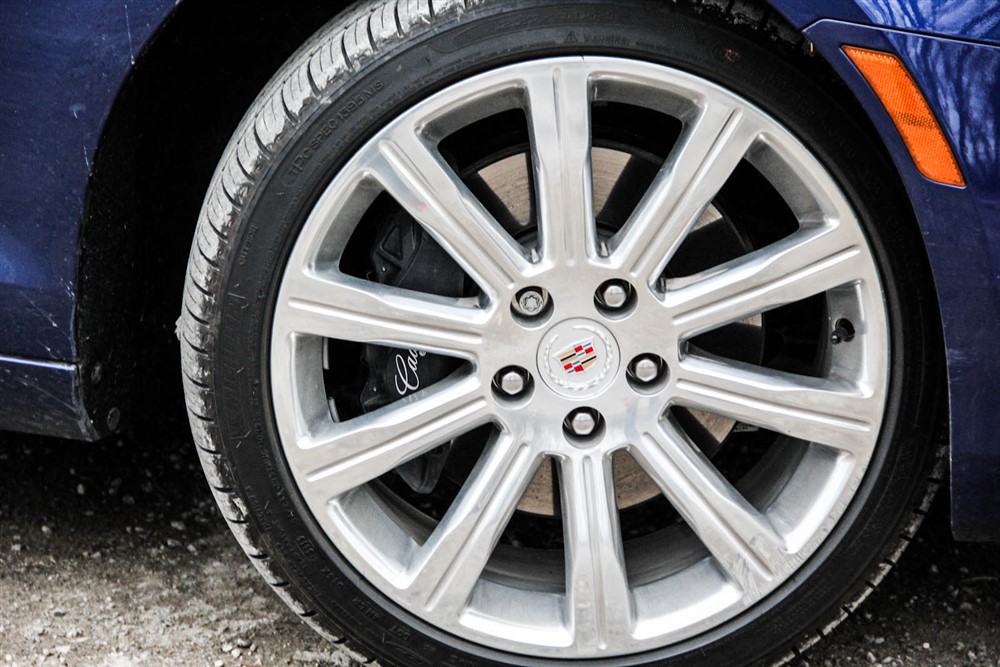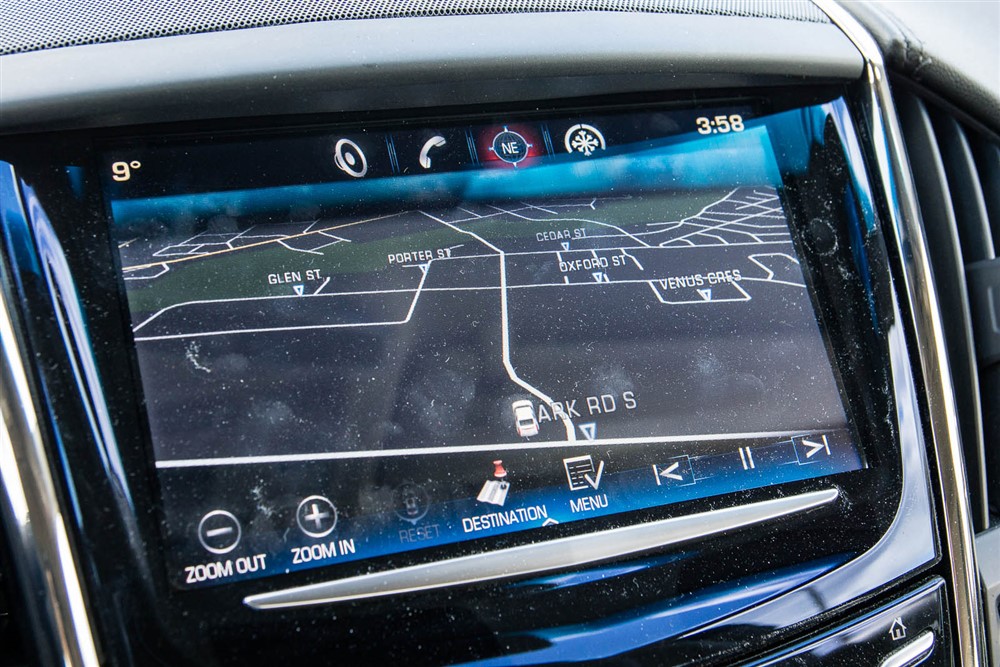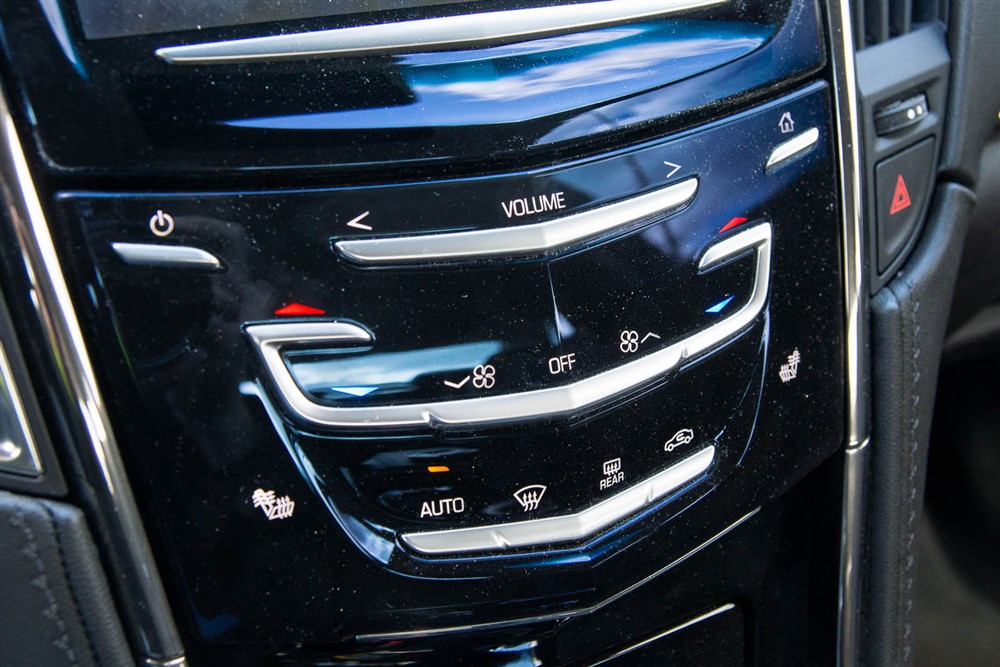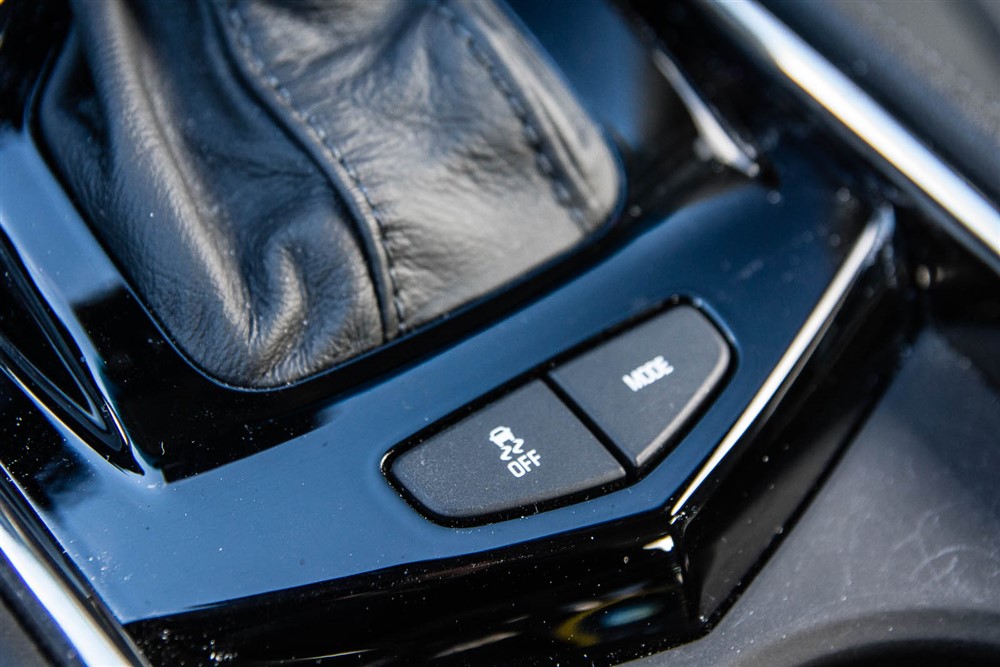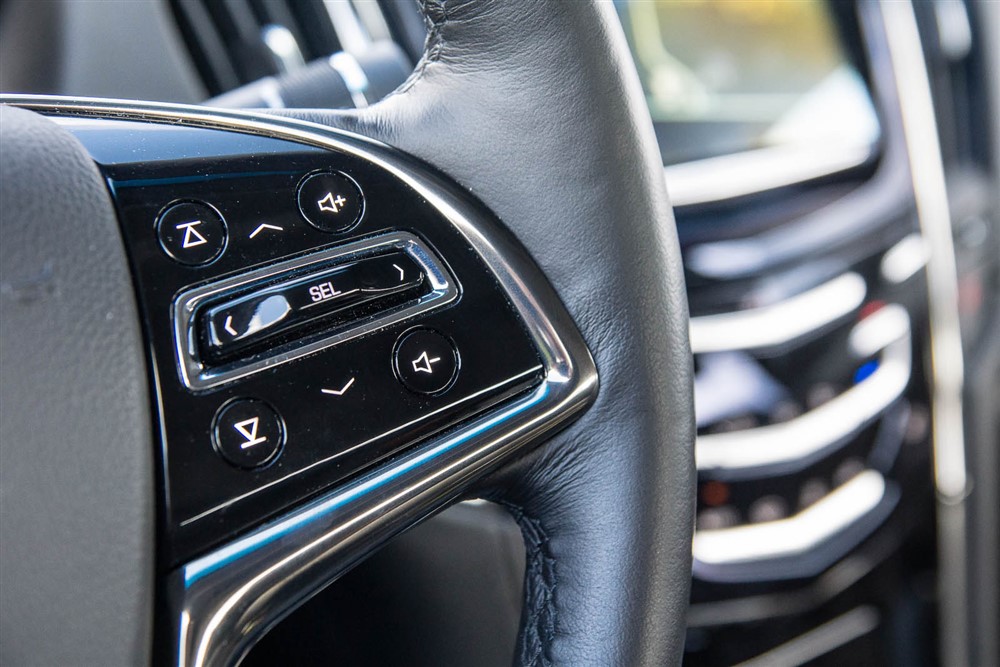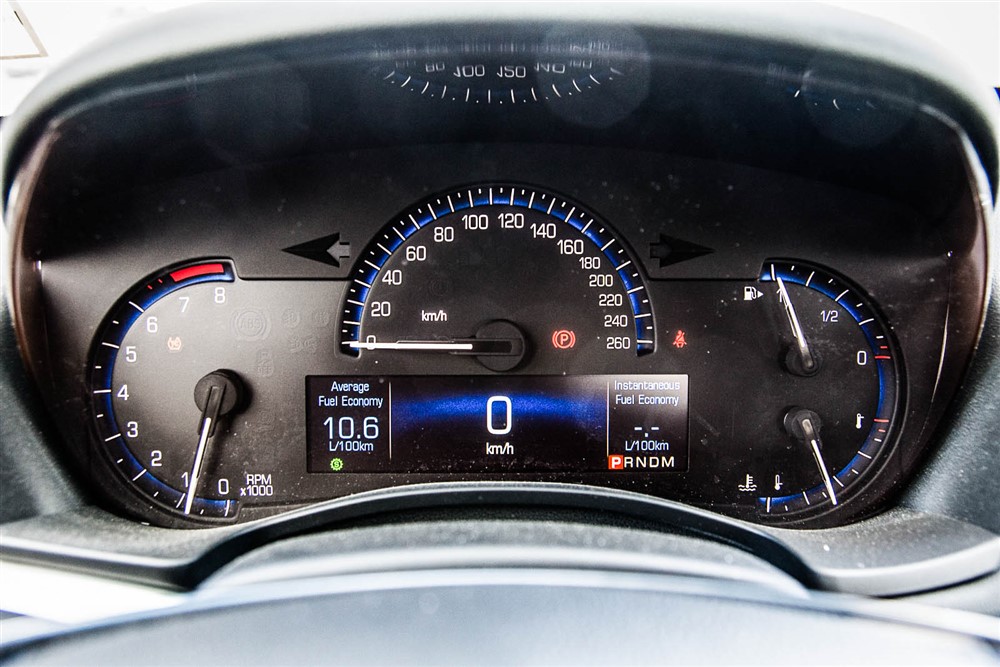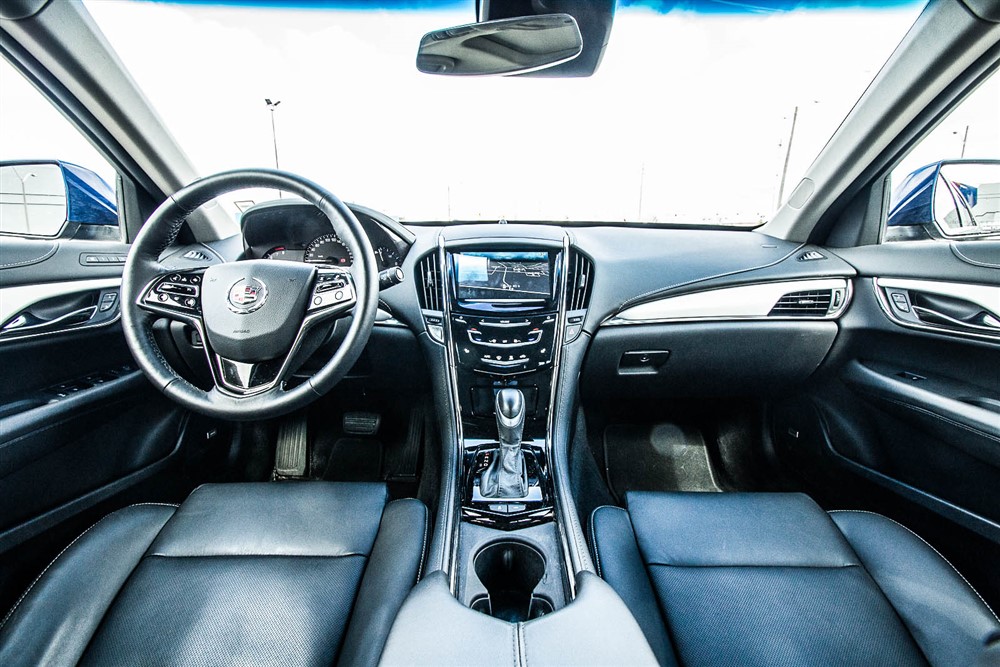The Cadillac ATS represents a repositioning of General Motors’ premium vision. Cadillac has been on a bit of a roll lately, taking the industry by surprise. The benchmark in the entry-level luxury class is arguably the BMW 3-Series, and with so many brands after the same piece of pie, competition is sure to be intense and rapidly evolving. The Cadillac CTS was the General’s offering, built to go against the imported competition while maintaining a generous helping of American style.
The first rear-drive product in the portfolio in quite some time, the first-generation CTS brought in the somewhat risky “Art and Science” design language that featured lots of straight edges and sharp angles. It was an interesting take on American design at the time, and the style soon propagated across the rest of the lineup. Most interesting was the first-generation CTS-V, which swapped out the midsize V6 for the LS-series V8 from the Corvette. The second-generation CTS grew in size and refined the style, but largely kept the same formula. The second-generation CTS-V became even more of a fire-breather via the use of a supercharger.
The CTS then grew in size and moved upmarket for 2014, bringing it closer to the BMW 5-Series. This opened up a vacancy at the bottom of their lineup. The ATS now returns to the compact entry-level luxury market, taking on new entries from BMW and Lexus, among others. Some have not been very happy with the way the current BMW 3-Series has become a little soft and aimed more at the luxury side of the sport-sedan equation. Could this be a good chance to change some minds? How will General Motors beat the Europeans at their own game? I picked up my tester: a Cadillac ATS, with the 2.0L turbo engine, all-wheel-drive, luxury collection, and painted in an Opulent Blue Metallic.
The ATS stays true to the trademark “Art and Science” theme but manages to incorporate a fresh look with its vertical headlights, taut proportions, and aggressively short overhangs. The trunk lid, specifically, is very short, and the long hood suggests a rear-drive architecture within. The rear exhausts are especially eye-catching, with their quasi-central design and low-mount reverse lamp. Overall, it’s a handsome design, managing to be current but not too conservative. I think it should age pretty well. Dimensionally, the ATS is within an inch of the current BMW 3-Series – wheelbase, length, width, and height. Cadillac doesn’t hide the fact that they’ve done some benchmarking and research.
My tester, with the Luxury Collection, is missing HID low-beam headlamps and fog lights and LED daytime running lights. This is a very curious omission and really devalues the front-end styling of the ATS. The LED daytime running lights, when equipped, run in a thin vertical channel alongside the main headlights. This little bit of accent lighting is essential to the ATS’ styling – otherwise it just looks like a small Cadillac with halogen headlights. These improvements in lighting are only available on the Performance and Premium models. The ATS 2.0T and 3.6 both ride on 18″ wheels of varying designs. Brembo front brakes peek out from within – a nice subtle suggestion of how serious Cadillac wants to be.
Inside, you’re treated to an upgraded GM steering wheel (with heat option and the ubiquitous CUE (Cadillac User Experience) interface, which controls media, navigation, and climate controls. Centre console aside, the interior is cleanly styled, the leather seats are comfortable, and materials quality is above average. The CUE system is a point of contention for many – some are able to get used to the touch-centric interface, and others will not. Like the system in the SRX, one cannot simply just take their index finger and stab the desired label to activate the function. I found it most effective to rest my finger over top the label and wait for the system to confirm (via haptic feedback). The ability to use multi-touch gestures to zoom in and out of the navigation map is a nice bonus. It’s a pretty and shiny system, but I find it requires far too much coordination to operate at speed.
My tester also came with the $945 Driver Awareness Package, which adds a whole host of active and passive safety features. Forward collision alert, lane departure warning, additional airbags, and the most tangible feature: a “safety alert seat”. When there is a threat of collision, the driver’s seat can vibrate strongly in hopes of getting your attention. The vibration is very strong – almost to the point of violating one’s posterior. Those unaware of this feature if they drive your ATS are in for a rude awakening.
The ATS is powered by a range of four and six-cylinder gasoline engines. It starts with a naturally-aspirated 2.5L four-cylinder, producing 202hp, a direct-injected 3.6L V6 that produces 321hp, and a turbocharged 2.0L four-cylinder that my test car has. Being the middle child, at 270hp, isn’t a bad thing in this case – the torque delivery compared to the other available engines is much more practical. This direct-injected and intercooled turbo-four produces 260lb-ft of torque, from 1700-5000rpm. The feeling from the seat of your pants isn’t far off from what the flagship V6 can produce. I personally prefer the 2.0T over the 3.6 because of the more favourable torque curve, and its better balance in the chassis –the majority of the engine is mounted behind the front axle.
The turbo four-cylinder engine in the ATS is often compared to the new turbo four-cylinder of similar displacement in the BMW 328i. In that car, it is rated at 241hp and 255lb-ft of torque. It is often said that the BMW is a little underrated in its horsepower rating, and is faster than the 241hp figure suggests. The 2.0T in the ATS also happens to sound a little coarser in the upper rev range, but it’s not totally objectionable.
The ATS pairs up your selection of engine with a six-speed automatic with manual shift capability, but only on the shifter itself. You’ll need to step up to the Performance collection in order to get the magnesium shift paddles behind the wheel. The transmission itself isn’t bad – the ratios are good and it largely does what’s best for the scenario, but it doesn’t compare to the transmissions offered by some of the competition. BMW and Audi both offer the excellent ZF 8-speed automatic transmission in nearly all their models. The shift quality in that gearbox is unparalleled, so the 6-speed GM uses feels a little dated by comparison. GM is working on a new in-house 8-speed automatic transmission, so it’s possible the ATS may see it in the future.
The ATS 2.0T is relatively efficient considering the power it puts out. GM rates it at 10.4L/100km in the city, 6.8L/100km on the highway, and 8.8L/100km in a combined cycle. I managed 10.7L/100km in mostly city driving. The ATS will accept 60.5L of fuel – premium is “recommended” but not required. A nice bonus is the ability accept regular fuel across the line, regardless of the engine you choose.
What surprised me are the chassis dynamics. Cadillac’s engineers have worked their magic in creating the most solid and responsive platform I’ve driven in a long time. The ZF-sourced electric steering rack does a good job relaying some feedback to the driver. The stiff reinforced chassis stood out to me as class-leading. It is great when you’re hitting a pothole or frost heave – the suspension does all the work, and the ATS chassis refuses to get upset even over the largest road imperfections. Engineers for many years had to compensate for some flex and torsion in the chassis whenever it comes upon a sharp impact. The ATS feels fantastic in this regard. The rock-solid rigidity lends itself to a great quality feel in the driver’s seat.
American automakers are no stranger to offering up the value quotient when it comes to competing with overseas competition. The ATS checks off a lot of the right boxes when compared to the BMW 3-Series, for example. Good weight balance, a wide range of powertrains, manual transmission availability, and just the right size. My tester, equipped with the Luxury Collection, CUE navigation interface, driver awareness package, and advanced security package, stickers at $49,290 before freight and dealer fees. I configured a similar BMW 328i xDrive sedan with some similar options and got well into the $50,000 range. My only issue is how the different packages are structured. The luxury and safety options are accessible for a relatively small premium over the base price, but the legitimate go-fast parts typically associated with a sports sedan are all buried in the upper-most Premium Collection package. If it were up to me, I would choose a rear-drive ATS with the 2.0T engine, six-speed manual, and Premium Collection package. This adds the sport suspension with the excellent Magnetic Ride Control (variable damping), limited-slip rear differential, additional cooling, and full heads-up display. This also resolves the lack of HID low-beam headlamps and adds the all-important LED daytime running lights.
At the end of my week, I was pleasantly surprised by the ATS. I knew it would be good – because it had to be good in order to be mentioned in the same room as the BMW 3-Series and others. The chassis tuning and powertrains by themselves are worthy of comparison. Like the SRX I tested some time ago, Cadillac’s CUE design is something one needs to wrap their head around before coming to a conclusion. It’s certainly a different way to operate everything in the car, and it will work for some, but not others. Personally, I prefer physical buttons, so it may be easy to determine where my preferences lie. Interface quirks aside, Cadillac is well on their way to redefining the brand that a lot of people still associate them with, and the ATS is sure to surprise and impress.
2014 Cadillac ATS 2.0T AWD Gallery









